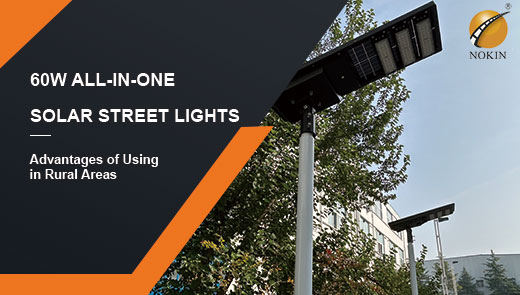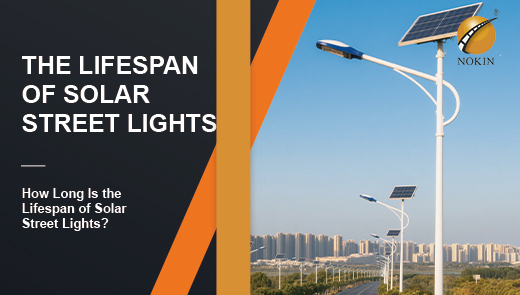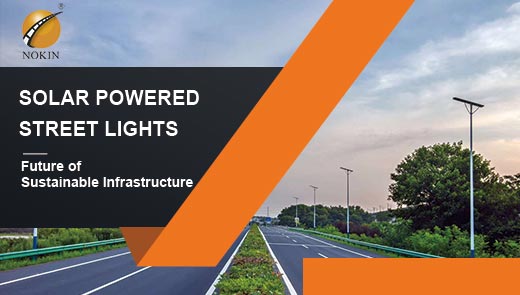Why Are All-In-One Solar Street Lights So Popular?
Against the backdrop of accelerating global energy transition, the solar lighting market is expanding at an average annual growth rate of 12%. According to the data, the global shipment of integrated solar street lights will exceed 8 million units in 2024, an increase of 210% compared with the traditional split solution. This kind of innovative products integrating photovoltaic panels, energy storage and lighting are becoming the new standard for lighting in municipal projects, rural roads and industrial parks by virtue of subversive technical advantages.
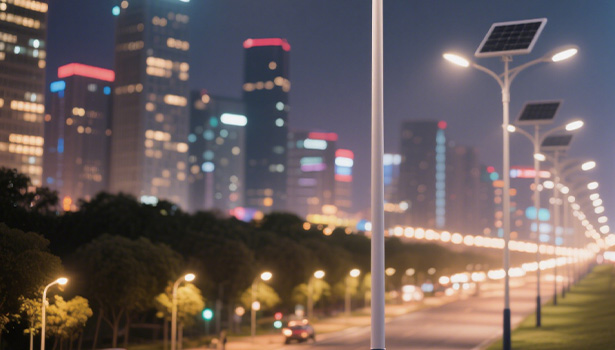
What is all in one integrated solar street light?
All-in-One Solar Street Light is a benchmark product for integrated outdoor lighting, integrating monocrystalline solar panels, high-efficiency LED light heads, lithium iron phosphate batteries, intelligent controllers, and human body sensors into a compact light body. The light is only 1/3 the size of traditional split solutions and weighs more than 50% less. The standard adjustable bracket is compatible with 3-8 meter poles and supports hoop and flange mounting, which can be deployed by a single person in 15 minutes without a professional electrician, significantly reducing installation complexity and labor costs.
In terms of material and process, the light body adopts aviation-grade aluminum alloy shell, with nano-ceramic coating on the surface, which has a salt spray corrosion resistance of 1000 hours (GB/T 10125 standard), and has passed the IP67 waterproof certification, which can operate stably in a wide temperature environment of -30℃~60℃. The internal potting sealing process combined with vibration testing (amplitude ≤ 0.15mm), effectively resisting extreme weather such as typhoons and dust. The modular design increases the energy transfer efficiency between modules by 18%, and with the intelligent dimming of PIR sensors, the overall energy efficiency of the system is 40% higher than traditional solutions, making it an efficient and durable choice for municipal, rural and industrial lighting.
All-in-one integrated solar street light: easy installation and cost-saving
The installation process of the All-in-one Integrated Solar Street Light has been greatly simplified, only 2 workers with wrenches can complete the fixing and commissioning of a single lamp in 10-15 minutes, compared with the traditional split solar street light which takes 4-6 hours. Compared with the 4-6 hours installation time required for traditional split-type solar street light (which needs to be operated by a team of professional electricians), the efficiency has been improved by more than 90%; compared with the traditional utility street light, its feature of not requiring pre-buried cables has eliminated the need for 2-3 hours of underground construction. At the cost level, the initial purchase cost of a single integrated street light is about $300-500, which is 50% lower than that of the split solution; only regular cleaning is required during the 5-year cycle, and the maintenance cost is as low as $50, which is less than 1/4 of that of the split solution ($200), and significantly lower than that of the traditional utility street light of $300 (including the cost of electricity and equipment maintenance).
For transportation, the integrated design of the whole packaging mode makes the logistics cost of 100 lamps only 800 US dollars, which is 60% less than the 2000 US dollars for split transportation. In a rural road project in Africa, the deployment cycle of 200 integrated street lights was only 7 days, 22 days shorter than the traditional solution, labor cost savings of $48,000, and the subsequent 5-year maintenance cost is less than 1/4 of the traditional solution, which has become a typical model of low-cost and high-efficiency lighting.
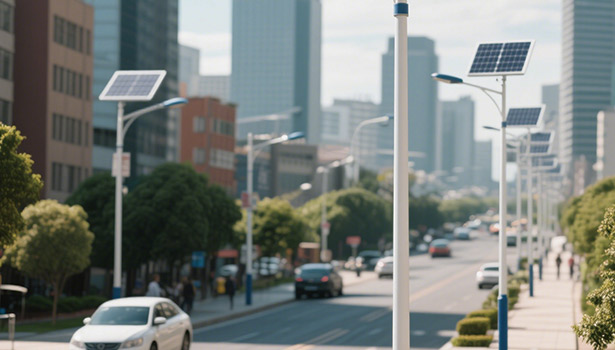
High efficiency and energy eaving: all-in-one integrated solar street light has the advantage of long life
In terms of energy efficiency, the integrated street light reinvents lighting logic with cutting-edge technology. Its high-performance LED chip adopts flip-chip technology, 5W power can burst 1200 lumens of light, with a luminous efficacy ratio of 240lm/W. The brightness is comparable to that of a traditional 100W high-pressure sodium lamp, while the energy consumption is only 5% of that of the latter, which is an energy-saving rate of up to 95%, and the carbon emission can be reduced by over 300 kilograms per year.
The energy storage system breaks through the traditional bottleneck: monocrystalline solar panels use the half-piece stacked-watt technology, with a laboratory conversion efficiency of 23.5%, and the 20Ah lithium iron phosphate battery can be fully charged with an average of 4 hours of light per day. The battery adopts automobile-grade electric core, with a capacity retention rate of 91% under -20℃ low-temperature environment, and a cycle life of 10,000 times, which is 33 times longer than that of lead-acid batteries (300 times), with a theoretical service life of more than 27 years.
In actual scenarios, the system's endurance performance is amazing: under the standard configuration (50W solar panel + 20Ah battery), it can support 5 consecutive nights of illumination (6 hours of full brightness + 8 hours of induction mode per night) after a full charge. The intelligent energy management system is equipped with a “rain and shine” function, which automatically reduces the off-peak brightness to 30% when continuous rain and shine occur, ensuring that the basic lighting will not lose power.
Extreme environmental adaptability
In the face of complex climatic conditions, the integrated street light shows excellent environmental tolerance. In the tropical rainforest area where the annual rainfall exceeds 3000mm, its IP67-rated waterproof design (can withstand immersion in water depth of 1 meter) and full sealing tape process effectively prevent rainwater from penetrating into the internal circuitry, and the 200 street lamps deployed in Southeast Asia's typhoon areas have an intact rate of 100% after experiencing a 14-stage typhoon; in the high temperature areas of the desert, the finned aluminum alloy heat dissipation structure reduces the surface temperature of the lamps and lanterns by 20% compared with the traditional design.
In the desert high temperature area, the finned aluminum alloy heat dissipation structure reduces the surface temperature of the lamps by 20℃ compared with the traditional design, and even at the extreme high temperature of 60℃, it can still maintain the normal work of the LED chips, and the Northwest Gobi project is still normally illuminated even after 15 consecutive days of cloudy and rainy weather. In the industrial dust environment, the nano-dustproof coating and air pressure balance valve design can resist the attack of dust with a concentration of more than 500mg/m³, so it can operate stably without frequent cleaning in the Middle East oil park and other scenarios.
Intelligent upgrade
Intelligence is another core competitiveness of the integrated street light. The PIR human body sensing system can realize motion detection at a distance of 10 meters and an angle of 120°, and the brightness instantly rises from 30% to 100% when it detects a moving object at night, which reduces power consumption by 45% throughout the year according to the calculation of 20 triggers on average per day. Through NB-IoT/LoRa and other communication technologies, the street light can be connected to the remote management platform, real-time monitoring of power, light intensity, fault alarm and other data, a smart city project, the fault response time from 48 hours to 2 hours, maintenance efficiency increased by 96%, to truly realize from “passive lighting” to “active service”. The real realization from “passive lighting” to “active service” of the leap.
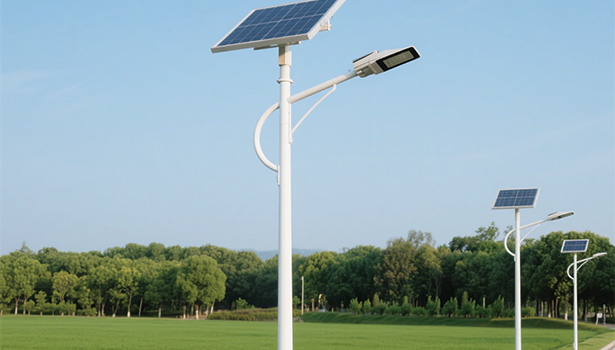
How to choose suitable all-in-one integrated solar street lights?
Solar panels
Solar panels, as the core component of light energy capture, directly determine the system endurance. Prefer monocrystalline half-chip solar panels, which use a diamond wire cutting process to reduce the thickness of silicon wafers to less than 150 μm, with lab conversion efficiencies of 22%-24%, more than 30% higher than that of traditional polycrystalline panels (16%-18%). Half chip design by reducing current loss (reduce internal series resistance), so that the actual outdoor power generation efficiency increased by another 5% -8%, the average daily 4 hours of light can be fully charged for 20Ah battery. Be alert to the phenomenon of “false power labeling” in the market - some vendors use “peak power” to confuse “actual power”. "It is recommended to ask suppliers to provide IEC 61215 certification report to verify the real output under STC conditions (irradiance 1000W/m², battery temperature 25°C).
In addition, the attenuation rate is a key indicator of long-term performance: single-crystal plate attenuation in the first year ≤ 3%, from the next year ≤ 0.3% / year, 10-year efficiency retention rate of ≥ 90%, and poor-quality amorphous plate 5-year attenuation may be more than 40%, be sure to confirm that the manufacturer to provide attenuation of the warranty commitment (usually 10 years or 25 years).
Light source and light control
LED light source selection needs to take into account the luminous efficacy, color temperature and life. In road lighting scenarios, 4000K warm white light (color rendering index Ra ≥ 70) is closer to the natural light spectrum and has better penetration than 5000K cold white light, which is especially suitable for rainy and foggy weather, and improves the driver's visual comfort and obstacle recognition distance. Luminous flux needs to reach 150lm/W or more, high-quality products up to 200lm/W, while poor-quality chips may be less than 100lm/W, resulting in “power inflated, insufficient brightness”.
Intelligent controller, PWM controller by dynamically adjusting the charging current, charging and discharging efficiency to more than 95%, more energy-efficient than the traditional switching controller (efficiency of about 80%), while supporting “light control + time control + inductive control” three-mode linked - - At the same time, it supports “Light Control + Time Control + Induction Control” three-mode linkage - e.g. setting the controller to automatically switch to induction mode after 2:00 a.m. to further reduce energy consumption during non-peak hours. It is recommended to choose a controller with MPPT (Maximum Power Point Tracking) function, which can automatically optimize the output power of solar panels under different lighting conditions, and increase power generation by 15%-20% on cloudy and rainy days.
Battery type
The choice of battery type should be combined with the usage scenario: Li-FePO4 batteries are ideal for cold/high humidity areas due to their 3000-5000 cycle life, capacity retention rate of more than 90% at -20℃, and no heavy metal contamination; Li-ion ternary batteries are suitable for temperate areas (cycle life of 2000-3000 cycles, capacity retention rate of 80-85% at -20℃), but professional recycling issues should be noted. Lead-acid batteries are only recommended for temporary or low-budget projects due to their short cycle life (300-500 cycles) and poor environmental friendliness.
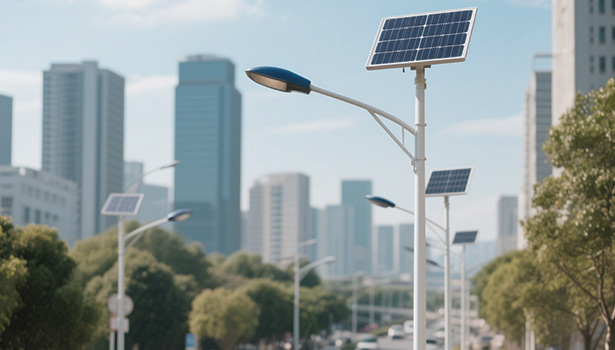
Protection level
IP67 waterproof and dustproof is the basic requirement for outdoor lamps and lanterns, and its test standard is: dust can not enter the shell (level 6 dustproof), and immersed in 1 meter water depth for 30 minutes without water ingress under normal temperature and pressure (level 7 waterproof). The salt spray corrosion test (GB/T 10125) simulates marine climate, and products that pass the 1000-hour test can be used in coastal areas for more than 10 years without rusting. Regional certifications:
European and American markets: CE (LVD + EMC), RoHS (Restriction of Hazardous Substances), UL1598 (Luminaire Safety Standard) certifications are required.
Middle East market: GCC certification (GSO standard) is mandatory, need to pass the SASO laboratory testing.
Southeast Asian market: Malaysia needs SIRIM certification, Thailand needs TISI certification, are on energy efficiency and electromagnetic radiation have strict regulations.
Avoid the pit: be alert to forged certification labels, you can enter the certificate number through the certification body's official website to verify the authenticity (such as CE certification can check the EU Database database).
Light pole
The height of the pole follows the principle of “road width × 0.7”: 6-meter wide road can choose 4-5 meter pole to meet the national standard “CJJ 45-2015 Road Lighting Design Standard” in the “average illuminance 10-15lx” requirements. The material should be hot-dip galvanized steel (zinc layer thickness ≥85μm), through the salt spray test for more than 1000 hours, coastal areas are recommended to upgrade to stainless steel (such as 304SS). Wall thickness ≥3mm can guarantee the wind resistance level ≥12 (wind speed 32.7-36.9m/s), typhoon areas need to be thickened to 4mm or more and increase the number of flange fixing bolts (such as M16×8). Installation method needs to match the site conditions: concrete foundation is suitable for permanent projects (pre-buried depth ≥ 1.2 meters), hoop installation is suitable for renovation projects (the diameter of the pole needs to be matched with the bracket, error ≤ 2mm).
Future trend: from single lighting to smart city node
With the deep integration of Internet of Things (IoT) technology and green energy system, the integrated solar street light is being upgraded from a simple lighting device to a basic data node of smart city. With the built-in high-capacity energy storage module and bi-directional converter, the future product can directly provide DC fast-charging service for electric vehicles, and build a micro-energy network of “distributed photovoltaic + localized energy storage + end-use electricity”; and the embedding of AI visual sensors will synchronize the street light with video monitoring, license plate recognition, environmental data collection (such as PM2.5 monitoring) and other functions. The embedding of AI visual sensors will synchronize streetlights with video monitoring, license plate recognition, and environmental data collection (e.g. PM2.5 monitoring), making them the front-end touchpoints of urban security and municipal management.
At the policy level, major economies around the world are accelerating this transition through legislation - the EU's Sustainable Energy Directive explicitly calls for the adoption of 100% renewable energy for municipal lighting by 2030, and the U.S. IRA Act provides up to a 30% investment tax credit for solar streetlight projects with integrated smart systems, further promoting the commercialization of the technology. commercialization process.
The popularity of integrated solar streetlights is essentially a result of the resonance between technological innovation and the need for sustainable development. Its compact design breaks the installation complexity of traditional lighting systems, intelligent energy efficiency reconstructs the efficiency of energy use, and extreme environmental adaptability breaks through the boundaries of geographic applications. From the starlit boulevards of rural Africa to the smart neighborhoods of Tokyo, these products are proving that green technology not only lights up the night, but also builds new infrastructures with both economic and social value. With global carbon neutrality on the horizon, integrated solar streetlights may become the only mainstream solution for outdoor lighting in the next decade - not just a light, but a key gateway to a zero-carbon future.

